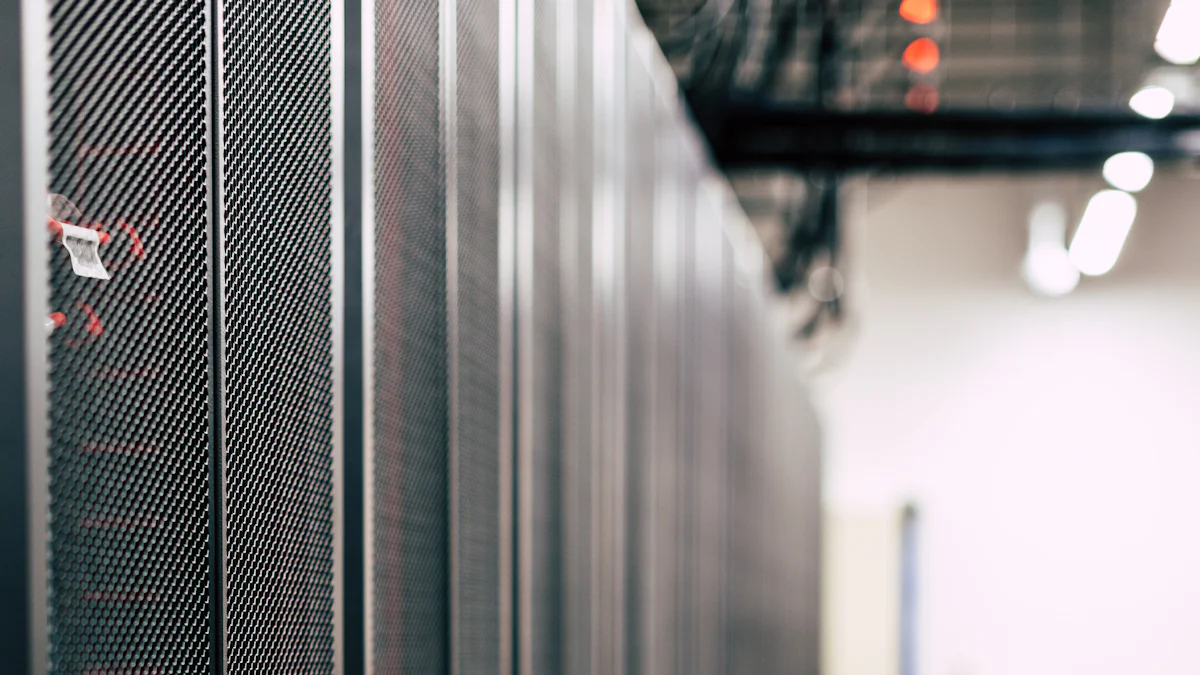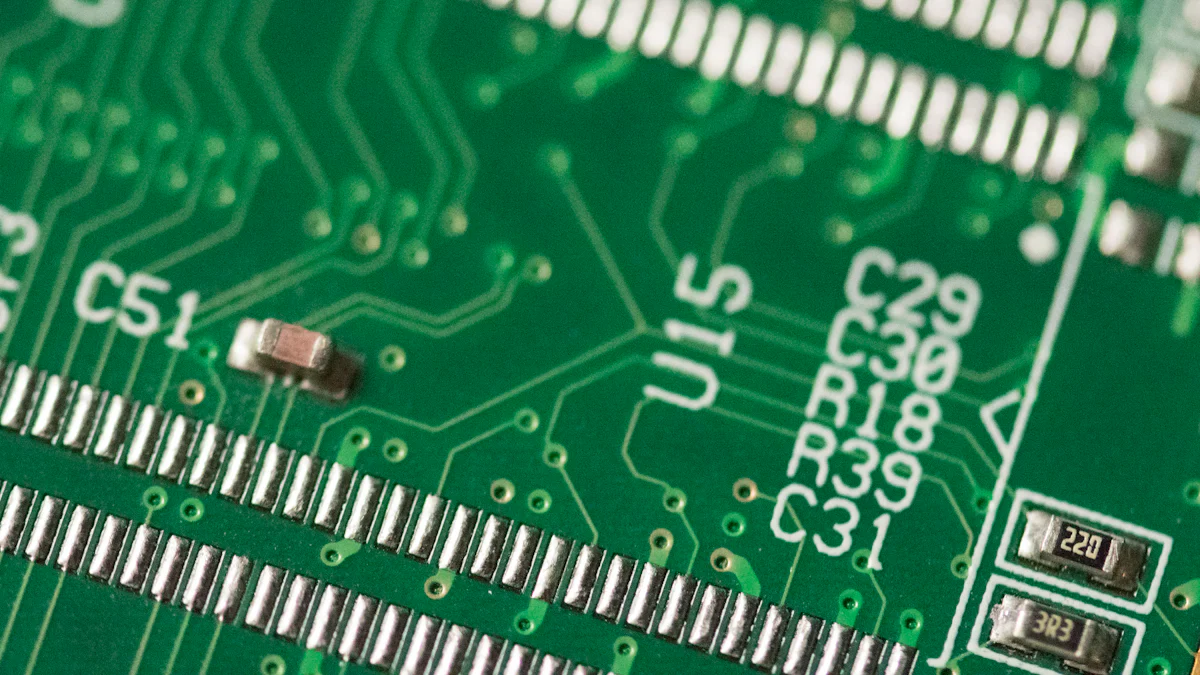


Data storage faces significant challenges as the volume of data continues to grow. In 2021, data centers stored 1,327 exabytes, marking a sharp increase from previous years. This surge highlights the need for efficient storage solutions. Hybrid Flash Array emerges as a vital solution. It combines the speed of SSDs with the capacity of HDDs, offering a balanced approach to data management. Understanding these storage solutions becomes essential as organizations strive to optimize performance and cost-effectiveness in an ever-expanding digital landscape.
Understanding Hybrid Flash Array
Definition and Components of Hybrid Flash Array
Hybrid Flash Arrays combine solid-state drives (SSDs) with traditional hard disk drives (HDDs). This combination enhances storage performance and capacity. The design increases input/output operations per second (IOPS) and decreases latency.
Flash Storage
Flash storage uses SSDs to provide high-speed data access. SSDs offer quick read and write operations. This speed is crucial for applications requiring rapid data retrieval.
Traditional Disk Drives
Traditional disk drives, or HDDs, provide large storage capacities at a lower cost. HDDs are suitable for storing less frequently accessed data. This balance helps manage costs while maintaining performance.
How Hybrid Flash Arrays Work
Hybrid Flash Arrays optimize data storage by using both SSDs and HDDs. This system efficiently manages data based on usage patterns.
Data Management
Data management involves moving frequently accessed data to SSDs. This process ensures that critical information is readily available. Less critical data remains on HDDs, maximizing storage efficiency.
Performance Optimization
Performance optimization focuses on increasing IOPS and reducing latency. The combination of SSDs and HDDs allows for faster data processing. This setup supports diverse workloads and enhances overall system responsiveness.
Types of Hybrid Flash Array
All-Flash Arrays
Characteristics
All-Flash Arrays consist entirely of solid-state drives (SSDs). These arrays deliver high performance with low latency. The design provides optimal input/output operations per second (IOPS). All-Flash Arrays offer fast data access and efficient management. The systems are resilient and non-volatile.
Use Cases
All-Flash Arrays suit environments requiring quick scalability. Organizations with high-performance application needs benefit from these arrays. Multicloud environments optimize well with All-Flash Arrays. Industries demanding agility and rapid data processing prefer this solution.
Hybrid Arrays
Characteristics
Hybrid Flash Arrays combine SSDs with traditional hard disk drives (HDDs). This combination balances cost, capacity, and performance. Hybrid Arrays increase IOPS and decrease latency to 3 to 5 milliseconds. The design offers a cost-effective solution for various workloads.
Use Cases
Hybrid Arrays fit environments needing lower operational expenses. Businesses requiring large storage capacity choose Hybrid Arrays. The ability to expand capacity makes them ideal for growing organizations. Average performance requirements align well with Hybrid Flash Arrays.
Benefits of Hybrid Flash Array

Cost Efficiency
Initial Investment
Organizations often face budget constraints when upgrading storage solutions. Hybrid Flash Arrays offer a cost-effective alternative to all-flash systems. The combination of SSDs and HDDs reduces the initial financial burden. IT Managers and Professionals highlight that hybrid arrays allow businesses to benefit from flash performance without the high costs associated with pure SSD systems. This approach enables a gradual transition from legacy equipment, minimizing upfront expenses.
Long-term Savings
Long-term savings become evident with the implementation of Hybrid Flash Arrays. Businesses can optimize storage costs by leveraging the capacity of HDDs for less critical data. This strategy reduces the need for frequent hardware upgrades. The efficient use of SSDs for high-demand applications enhances system longevity. IT Managers and Professionals note that hybrid solutions improve performance while maintaining cost-effectiveness over time. This balance leads to significant savings in operational expenses.
Performance Enhancement
Speed and Responsiveness
Hybrid Flash Arrays enhance speed and responsiveness in data processing. The integration of SSDs increases Input/Output Operations Per Second (IOPS). This improvement results in faster data access and reduced latency. IT Managers and Professionals emphasize that hybrid arrays outperform traditional HDD systems in terms of performance. Although not matching all-flash solutions, hybrid arrays provide sufficient speed for many modern applications. The strategic use of flash storage ensures quick response times for critical tasks.
Scalability
Scalability is a crucial factor for growing organizations. Hybrid Flash Arrays offer flexible storage expansion options. Businesses can easily increase capacity by adding more HDDs. The scalable nature of hybrid arrays supports evolving data needs. IT Managers and Professionals acknowledge that hybrid solutions accommodate varying workloads effectively. This adaptability allows companies to scale their storage infrastructure without significant disruptions. The ability to expand storage capacity ensures continued performance optimization.
Success Stories and Case Studies of Hybrid Flash Array
Industry Applications
Healthcare
Hybrid Flash Arrays transform healthcare data management. University of Pittsburgh Medical Center (UPMC) collaborates with IBM to enhance data storage. Faster access to patient records improves care quality. Efficient storage management supports large-scale electronic health records. Rapid imaging access becomes possible, enhancing patient outcomes.
Financial Services
Financial services benefit from Hybrid Flash Arrays. BDO Unibank partners with Huawei to reach unbanked populations. The creation of the BDO Pay mobile wallet enables contactless payments. Digital banking services become more accessible. This collaboration demonstrates the impact of hybrid storage solutions in financial sectors.
Historical Context of Storage Solutions
Evolution of Data Storage
From HDD to SSD
Data storage has evolved significantly over the years. Hard disk drives (HDDs) provided large storage capacities at a low cost. Businesses relied on HDDs for many years due to their affordability. Solid-state drives (SSDs) introduced a new era with faster data access. SSDs offered speed and efficiency, transforming data management. The transition from HDDs to SSDs marked a major shift in storage technology.
Emergence of Hybrid Solutions
Hybrid solutions emerged to combine the best of both worlds. Hybrid flash arrays blend SSD speed with HDD capacity. This combination offers a balanced approach to storage needs. Businesses benefit from increased performance without losing cost-effectiveness. Hybrid storage provides a valuable alternative to all-flash arrays. Enterprises can optimize workloads with this innovative solution.
Technological Advancements
Impact on Storage
Technological advancements have greatly impacted storage solutions. Flash technology improved data processing speeds. Hybrid storage systems enhanced performance over traditional HDD arrays. The integration of flash into HDD arrays boosted efficiency. Businesses can now handle high-capacity workloads more effectively. Hybrid storage delivers enterprise-grade performance with cost benefits.
Future Directions
Future directions in storage technology continue to evolve. Innovations in hybrid storage promise further enhancements. The focus remains on increasing speed and reducing costs. Emerging technologies aim to improve scalability and flexibility. Businesses anticipate new solutions to meet growing data demands. Hybrid flash arrays will likely play a key role in future storage strategies.
Future Trends in Hybrid Flash Array

Technological Innovations
AI and Machine Learning
AI and machine learning technologies enhance hybrid flash arrays. These technologies analyze data patterns to optimize storage efficiency. AI predicts data access needs, moving critical data to SSDs. Machine learning algorithms improve data management processes. Businesses experience faster data retrieval and processing.
Cloud Integration
Cloud integration transforms hybrid flash arrays. Businesses connect on-premises storage with cloud solutions. This integration provides seamless data access across platforms. Hybrid arrays offer flexibility for cloud-based applications. Organizations benefit from scalable and efficient storage options.
Market Predictions
Growth Projections
The hybrid flash array market shows significant growth potential. Increased demand for efficient storage drives market expansion. Businesses seek solutions that balance cost and performance. Hybrid arrays meet these needs with their versatile capabilities. The market anticipates continued adoption across industries.
Emerging Markets
Emerging markets present opportunities for hybrid flash arrays. Growing digital infrastructure fuels demand for advanced storage. Businesses in these regions require cost-effective solutions. Hybrid arrays provide a balanced approach to storage challenges. These markets will likely see increased investment in hybrid technologies.
Related Storage Solutions of Hybrid Flash Array
Comparison with Other Technologies
Pure Flash Storage
Pure flash storage uses only solid-state drives (SSDs). This technology offers high-speed data access and low latency. Pure flash arrays excel in environments demanding rapid data processing. These systems provide maximum performance but come with higher costs. Hybrid flash arrays, however, balance speed with cost-effectiveness by combining SSDs with hard disk drives (HDDs). This combination allows businesses to optimize performance while managing expenses.
Traditional HDD Storage
Traditional HDD storage relies on hard disk drives for data management. HDDs offer large storage capacities at a lower cost. However, these drives have slower data access speeds compared to SSDs. Hybrid flash arrays improve upon traditional HDD storage by integrating SSDs. This integration enhances input/output operations per second (IOPS) and reduces latency. Businesses benefit from a more responsive system without losing the cost advantages of HDDs.
Complementary Technologies
Data Deduplication
Data deduplication removes duplicate copies of repeating data. This process optimizes storage efficiency by reducing the amount of data stored. Hybrid flash arrays often use data deduplication to maximize available space. This technique ensures that only unique data occupies the storage, enhancing overall capacity.
Compression Techniques
Compression techniques reduce the size of data files. This process allows more data to fit within the same storage space. Hybrid flash arrays employ compression to improve storage utilization. By compressing data, businesses can store more information without needing additional hardware. This approach supports efficient data management and cost savings.
Hybrid flash arrays offer a balanced infrastructure by combining the speed of SSDs with the capacity of HDDs. This approach enhances performance and optimizes storage solutions for various workloads. Staying updated with storage technologies ensures that organizations can leverage these advancements for improved efficiency. Exploring further solutions allows businesses to adapt to evolving data demands and maintain competitive advantages in the digital landscape.
FAQ
A hybrid flash array combines solid-state drives (SSDs) with traditional hard disk drives (HDDs). This combination offers the speed of SSDs and the capacity of HDDs.
Hybrid flash arrays provide a best-of-both-worlds scenario. The system delivers fast data access and large storage capacity at a cost-effective price.
Hybrid flash arrays store frequently accessed data on SSDs. This setup increases input/output operations per second (IOPS) and reduces latency.
Hybrid flash arrays combine the low cost per gigabyte of HDDs with the speed of SSDs. This approach reduces initial investment and provides long-term savings.
Hybrid flash arrays suit various industries, including healthcare and financial services. The technology supports diverse workloads and enhances data management.
Hybrid flash arrays manage data by moving critical information to SSDs. Less critical data remains on HDDs, optimizing storage efficiency.
Hybrid flash arrays allow easy expansion by adding more HDDs. This scalability supports growing data needs without significant disruptions.
Hybrid flash arrays integrate with emerging technologies like AI and cloud solutions. These innovations ensure continued relevance and adaptability.
Hybrid flash storage offers expansive capacity and unbeatable speeds. This combination makes it an ideal choice for businesses seeking balanced performance and cost-effectiveness.
Continue Reading About Hybrid Flash Array
Mastering Data Visualization Principles for Effective Communication
Master data visualization principles to transform complex data into clear, actionable insights for effective communication.
Howard
Nov 20, 2024
10 Game-Changing Project Management Reporting Types!
Unlock project success with 10 must-know reporting types! Track progress, manage risks, and stay on budget like a pro.
Lewis
Mar 03, 2025
15 Best Software Reporting Tools for 2025
Explore the top 15 software reporting tools for 2025. Compare features, pricing, and usability to find the best fit for your business needs.
Lewis
Oct 08, 2024
2025 Best Data Integration Solutions and Selection Guide
Explore top data integration solutions for 2025, enhancing data management and operational efficiency with leading platforms like Fivetran and Talend.
Howard
Dec 19, 2024
2025 Data Pipeline Examples: Learn & Master with Ease!
Unlock 2025’s Data Pipeline Examples! Discover how they automate data flow, boost quality, and deliver real-time insights for smarter business decisions.
Howard
Feb 24, 2025
2025's Best Data Validation Tools: Top 7 Picks
Explore the top 7 data validation tools of 2025, featuring key features, benefits, user experiences, and pricing to ensure accurate and reliable data.
Howard
Aug 09, 2024


